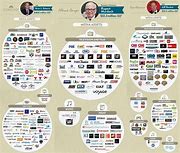You sit down to search for a new home internet provider, only to realize you have limited choices. Sound familiar? Many face this dilemma of choosing between one or two providers, often big names like Spectrum or AT&T. The frustration mounts when your bill keeps climbing, and there’s no better alternative in sight.
“If you live in an area dominated by a single provider, you’re at their mercy,”
remarked a telecommunications expert. With limited competition, these internet giants can hike prices without repercussions, leaving consumers with little recourse.
The issue of internet monopolies isn’t unique; it’s a widespread problem affecting millions across the country. Shockingly, over a third of Americans have access to just one or no internet provider at all. This lack of options not only leads to inflated bills but also stifles innovation and service quality.
As industry behemoths like Spectrum eye mergers and acquisitions to solidify their market dominance, the landscape is shifting towards even fewer choices for consumers. Recent deals like Spectrum acquiring Cox and AT&T buying out Lumen’s Quantum Fiber further consolidate power in the hands of a select few ISPs.
Experts warn that such consolidation may limit consumer choice and stifle competition.
“Fewer players mean less incentive to lower prices or improve services,”
explained a policy analyst. The consequences are clear: higher costs for consumers and fewer avenues for affordable high-speed internet access.
The high cost of broadband in the US stands out globally as Americans pay significantly more for internet compared to other countries. Experts attribute this trend to market concentration favoring large ISPs, leading to limited competition and inflated prices.
“Americans pay between $74 and $84 per month on average for broadband services — this is entirely price-gouging,”
emphasized an industry expert. While technological advancements have improved connection speeds over the years, affordability remains a critical concern for many households.
In areas lacking robust competition from local providers, residents often rely on satellite internet with its slower speeds and higher costs as a last resort. Rural communities bear the brunt of limited options, facing connectivity challenges due to inadequate infrastructure investments from major ISPs.
Despite these challenges, pockets of regions showcase thriving competition among ISPs offering fast and cost-effective internet solutions. Municipal broadband networks in towns like Wilson, North Carolina exemplify how community-owned initiatives can deliver superior service at competitive prices compared to private ISPs.
In efforts to bridge the digital divide and reduce monthly costs for low-income households, government programs like BEAD aim to enhance accessibility through subsidies and investment in broadband infrastructure. However, disagreements over program administration persist among stakeholders despite significant federal funding allocations.
So what does this mean for everyday consumers like you? As policymakers grapple with ways to promote fair competition and affordability in the broadband market,
individuals can explore alternatives such as fixed wireless services offered by companies like Starlink or T-Mobile.
These options provide viable alternatives especially in underserved areas where wired connections are impractical.
While challenges persist in ensuring equitable access
to high-speed Internet at reasonable rates,
advocacy efforts continue
to push for greater transparency,
competition,
and consumer choice
in the broadband industry.
In navigating the complex web of ISP offerings,
consumer awareness
and advocacy play crucial roles
in promoting fair practices
and fostering innovation
in delivering accessible,
reliable Internet services
for all.









Leave feedback about this